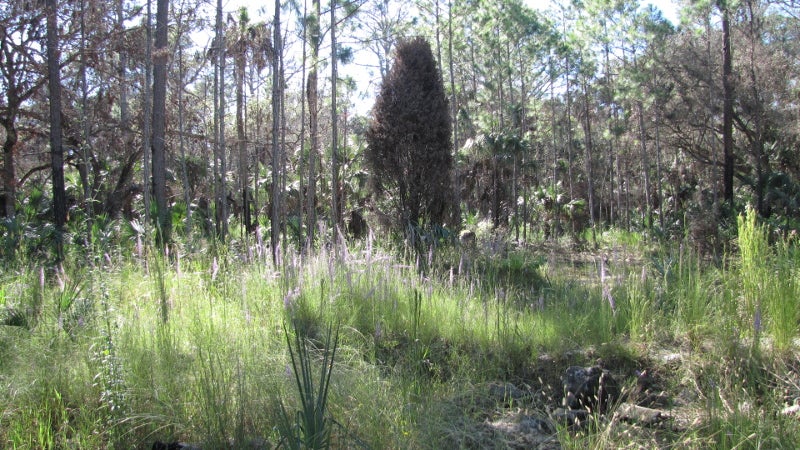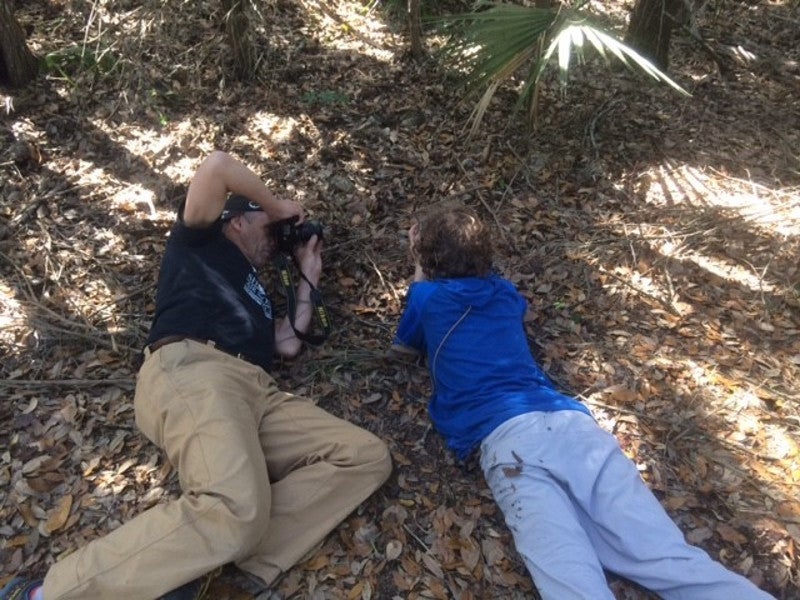A master of camouflage, the spiked crested coralroot (Hexalectris spicata) lacks chlorophyll and exists entirely on nutrients obtained from fungi in the soil. The ideal environment for this endangered Florida orchid occurs in areas with minimal ground disturbance and containing ample amounts of cedars, oaks, lime rock and leaf litter to foster growth.

Finding an orchid can be tough work. They generally bloom in warmer weather and grow quite low to the ground. You may search for days, and just when you’re ready to give up you see an odd, leafless brown pencil-like stick with dozens of perfectly formed miniature flowers sticking up out of the leaf litter. At first it doesn’t look like much. You may not have even known that brown and purple could look good together, but this combination of color in nature is uncommon and ultimately amazing, and a few minutes of observation is enough to begin to fully appreciate this special plant.
Park biologists, in partnership with volunteers from the Citrus County Chapter of the Florida Native Plant Society, survey known populations of coralroot in the preserve in early summer to determine if the population is stable. Because coralroot is as important as any other endangered or imperiled species in the park, we have a commitment to ensuring these plants can continue to be seen by many more generations to come.

If you are fortunate enough to observe this hardy little orchid on your next trip to Crystal River Preserve State Park, be grateful. It is a treat not afforded to many, and the perseverance that it represents is a lesson that we can all learn from.
Top image: Clarence A. Rechenthin, hosted by the USDA-NRCS PLANTS Database
